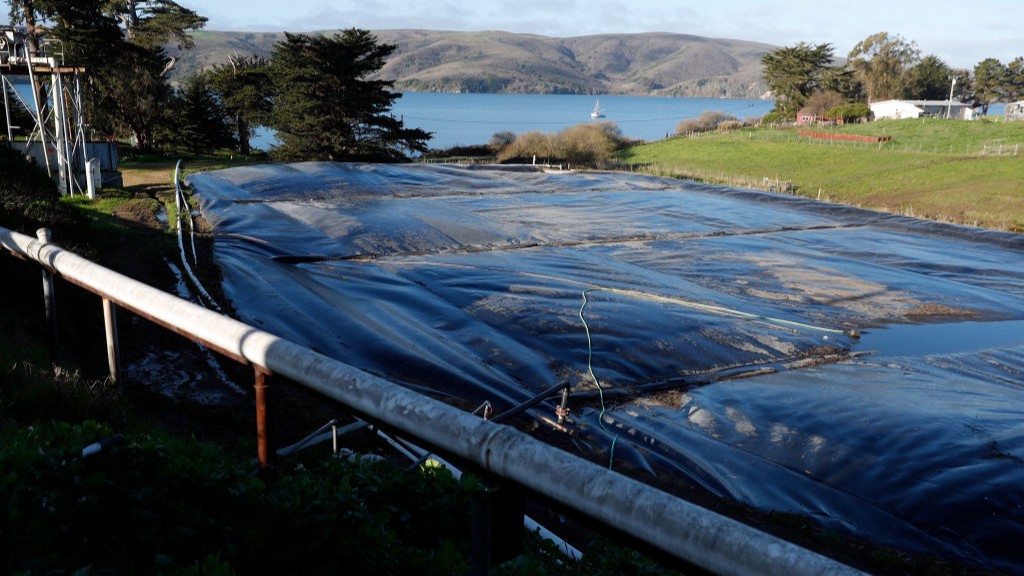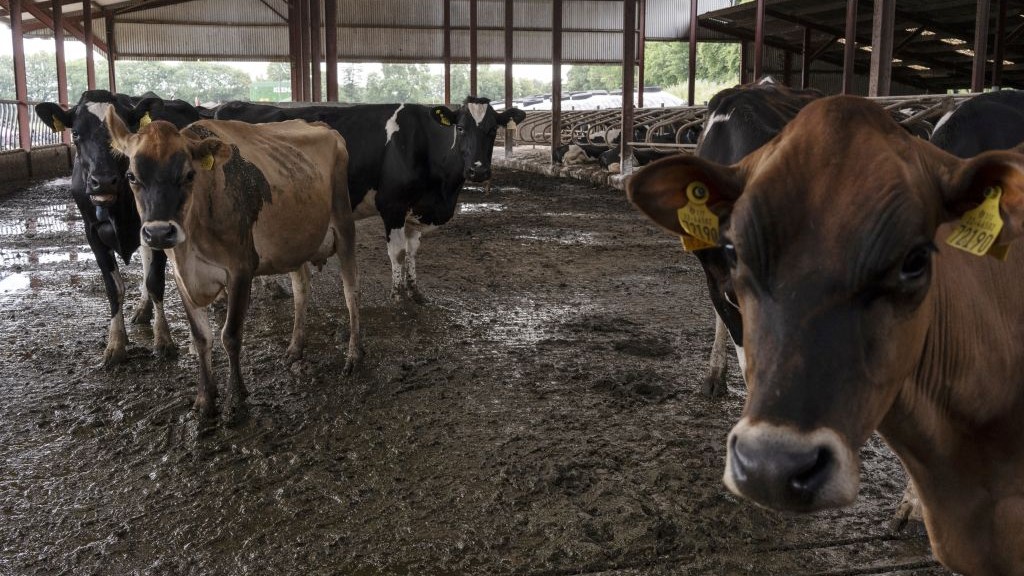Covering poop lagoons with a tarp could cut 80% of methane emissions from dairy farms
"Digesters" that convert methane from manure ponds into fuel can dramatically reduce emissions of this potent greenhouse gas on dairy farms, scientists have found.

Dairy farms produce huge amounts of potent greenhouse gases. But now, scientists say these farms can slash their methane emissions by covering cow-poop ponds with a giant tarp.
Scientists recorded an 80% reduction in the methane emissions of a dairy farm in California after its owners installed a "digester" — a system that traps gases over manure ponds and converts them into fuel, according to a new study.
"When the system is built well and managed carefully, the emissions can really drop. That's what we saw here," study co-author Francesca Hopkins, an assistant professor of climate change and sustainability at the University of California, Riverside, said in a statement.
Methane is a greenhouse gas with 80 times the warming potential of carbon dioxide over 20 years. Cow manure produces methane during decomposition, when bacteria break down the organic matter. Emissions from livestock manure are the largest source of methane in California and the fourth largest source across the United States, but by scaling up the use of digesters and plugging any leaks that may appear in them, researchers think that farmers could make a huge dent in these methane emissions.
Digesters are seals that prevent methane from escaping from manure ponds. The methane is sucked out of the system and either burned for electricity or purified to make renewable natural gas. This can be injected into a natural gas distribution system, compressed to produce vehicle fuel, or processed to make other products, according to the U.S. Environmental Protection Agency.
Related: 32 weird ways to fight climate change that just might work
Hopkins and her colleagues measured the impact of a digester on a dairy farm in Tulare County, the region that produces the most milk in the U.S., according to the statement. The researchers set up a mobile measurement station with gas sensors to record methane levels around the farm for a year before, and a year after, the digester was installed in 2021.
Get the world’s most fascinating discoveries delivered straight to your inbox.
Before the digester, levels of methane near the farm's manure pond averaged 28.6 parts per million (ppm), according to the new study, published June 4 in the journal Global Change Biology Bioenergy. Once the digester was in place, that number dropped to 3.7 ppm. There were leaks in the system to begin with, but together with the operator, the researchers detected and plugged these leaks, according to the statement.

The results from the Tulare County farm prove just how effective digesters can be at cutting methane emissions, according to the study.
Digesters currently top California's list of strategies to curb methane emissions from agriculture, and in 2016, the state signed into law a senate bill to slash dairy and livestock methane contributions by 40% below 2013 levels by 2030. According to the new study, if the 139 dairy farms in California that have digester projects report similar reductions in methane as the Tulare County farm, then 39% of the 40% target will be achieved.
However, operating a digester requires investment, permits and long-term maintenance. These systems also can't control emissions and pollutants other than methane, such as ammonia, according to the statement.
"They're not for every farm," Hopkins said. "But for dairies that can make it work, this is one of the most cost-effective ways we have to cut these greenhouse gas emissions."

Sascha is a U.K.-based staff writer at Live Science. She holds a bachelor’s degree in biology from the University of Southampton in England and a master’s degree in science communication from Imperial College London. Her work has appeared in The Guardian and the health website Zoe. Besides writing, she enjoys playing tennis, bread-making and browsing second-hand shops for hidden gems.
You must confirm your public display name before commenting
Please logout and then login again, you will then be prompted to enter your display name.


